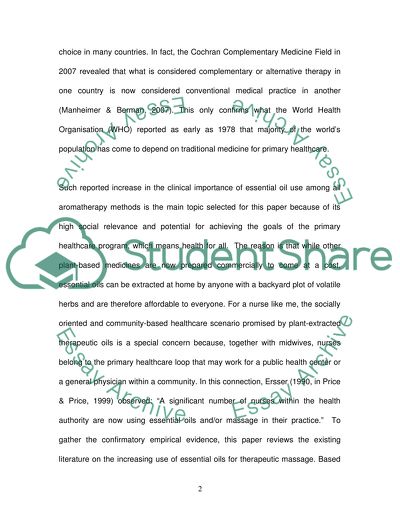Cite this document
(“Essential Oils as Aromatherapy Medicines Essay Example | Topics and Well Written Essays - 3000 words”, n.d.)
Essential Oils as Aromatherapy Medicines Essay Example | Topics and Well Written Essays - 3000 words. Retrieved from https://studentshare.org/health-sciences-medicine/1508081-essential-oils-as-aromatherapy-medicines
Essential Oils as Aromatherapy Medicines Essay Example | Topics and Well Written Essays - 3000 words. Retrieved from https://studentshare.org/health-sciences-medicine/1508081-essential-oils-as-aromatherapy-medicines
(Essential Oils As Aromatherapy Medicines Essay Example | Topics and Well Written Essays - 3000 Words)
Essential Oils As Aromatherapy Medicines Essay Example | Topics and Well Written Essays - 3000 Words. https://studentshare.org/health-sciences-medicine/1508081-essential-oils-as-aromatherapy-medicines.
Essential Oils As Aromatherapy Medicines Essay Example | Topics and Well Written Essays - 3000 Words. https://studentshare.org/health-sciences-medicine/1508081-essential-oils-as-aromatherapy-medicines.
“Essential Oils As Aromatherapy Medicines Essay Example | Topics and Well Written Essays - 3000 Words”, n.d. https://studentshare.org/health-sciences-medicine/1508081-essential-oils-as-aromatherapy-medicines.


